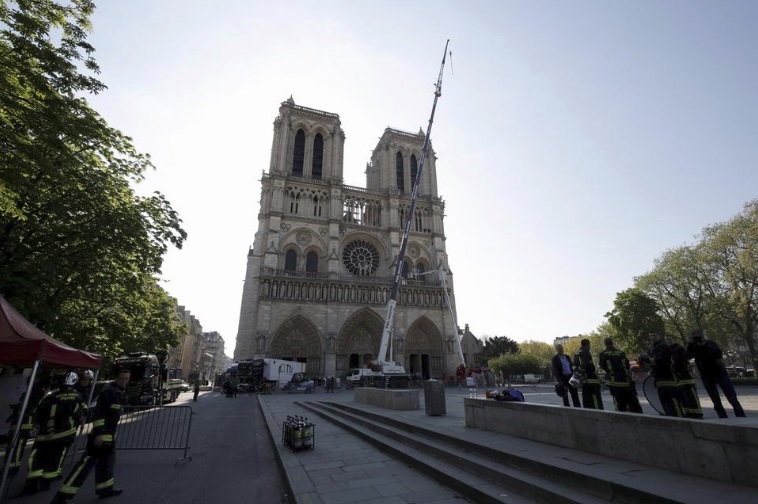In the picture above, a crane is working on Notre-Dame cathedral in Paris, Friday, April 19, 2019. Rebuilding Notre Dame, the 800-year-old Paris cathedral devastated by fire last week, will cost billions of dollars as architects, historians and artisans work to preserve the medieval landmark.
The news of the fire at Notre Dame Cathedral has sent shock waves around the world, but most especially to historic communities because that nearly 800 year-old edifice has come to represent not just Paris but the French culture and history as a whole.
It is worth thinking about why the threat and near loss of such a building is so important and terrifying. And it is worth thinking deeply about why architecture matters.
Architecture is, of course, an art form, but unlike painting, sculpture or literature, it is not the work of a single mind and hand but rather the reflection of the broader culture which gave it purpose and form. Notre Dame reflects the spirit of its creators to give shape to the soaring feeling of religious devotion they felt.
Notre Dame reflects the technical mastery of nameless engineers who had learned through inventive trial and error how to construct buildings using flying buttresses so the thrusts of the roof could be carried to the outside of the building rather than carried on pillars within the building. Notre Dame reflects the harnessing of the broader economy at a time of growth and prosperity to create a vast and glorious building not for industry, trade or profit but for reflection and inspiration. In other words, Notre Dame is a by-product of all the philosophic, technical, economic and social phenomenon of its era.
Architecture is fixed in space, stationary and unmoving and becomes the landmarks by which we navigate through our surroundings. If you think about it, architecture is the coalescence of the cultures which gives it form and function, and these buildings can be used and studied and communicate over the span of decades and even centuries. Architecture, when done correctly, is the gift and story of our existence that we leave our children, their children and generations of children we will never live to meet.
As the embodiment of culture and history, architecture comes to represent and epitomize place and spirit as well. Each historic community has its unique monuments which exist nowhere else and therefore become synonymous with those cities or town. Stonehenge, the Houses of Parliament, the Empire State Building, the White House and a thousand other structures around the world are instantly recognizable to people who have seen them and evoke the places where those structures stand and the character of the people who built and used them.
Newport also has these iconic buildings: the Colony House, Trinity Church, the Newport Casino and the Breakers all reflect not just the history of the people of Newport but also the city’s place within the broader American culture. Thank goodness Notre Dame was saved from collapse but it is a reminder of the importance and value of our irreplaceable architectural treasures and the reason why architecture matters far more than just as an enclosure of space for some pragmatic purpose.
Winston Churchill said it most succinctly: “We shape our buildings, and afterwards, our buildings shape us.”
We must therefore protect and preserve our historic structures where we can because those structures are a part of us, both individually and as a reflection of our shared history and heritage.
Looking to remodel your home? Let’s connect.
Join the Architectural Forum to stay up-to-date with architectural news from Rhode Island and abroad.
Ross Sinclair Cann, AIA, LEED AP, is an historian, educator, author and practicing architect living and working in Newport for A4 Architecture.
